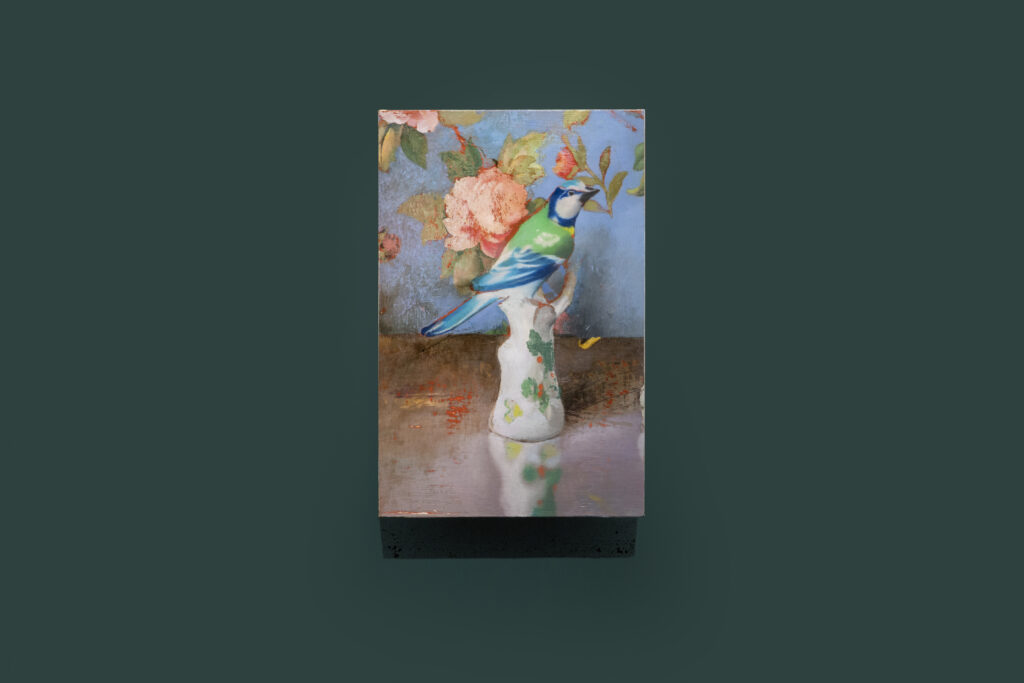
EX6, Bird, 2021, oil on canvas, 42,5 x 65 x 4 cm, National Art Gallery of Bologna, Bologna, Italy
Cristiano Tassinari
Cristiano Aldini Tassinari
Cristiano Tassinari
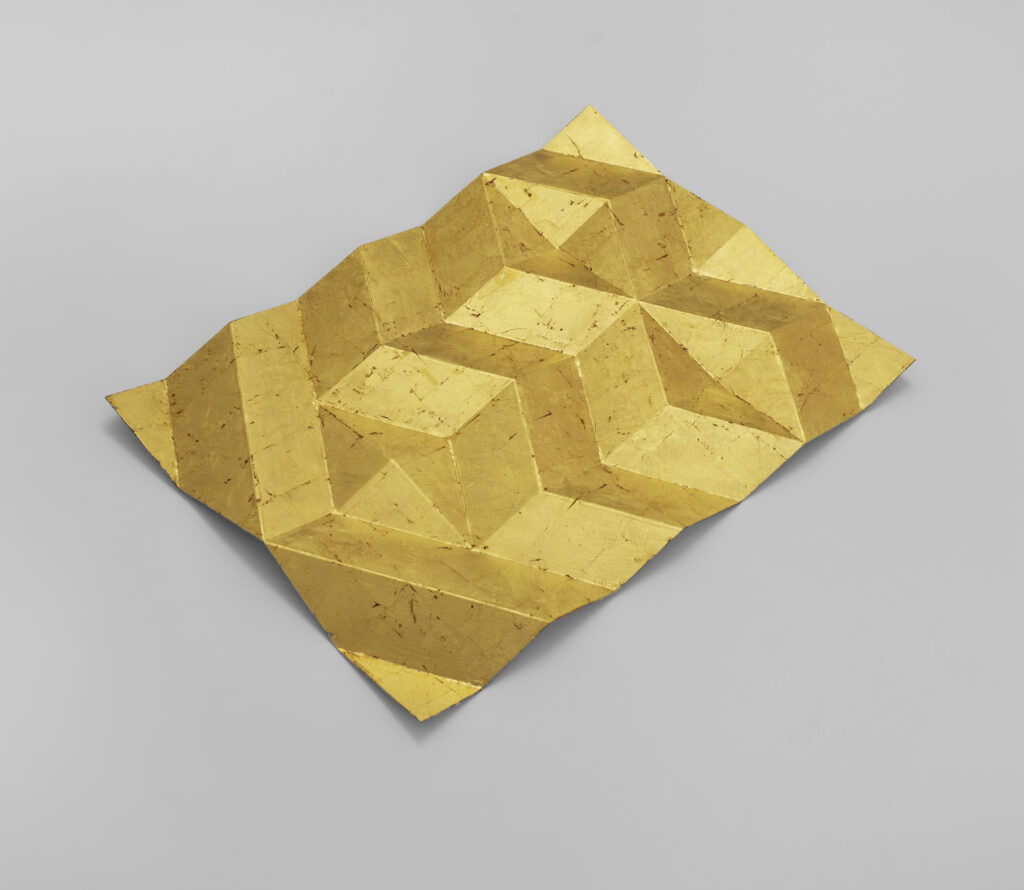
EX6, Philharmonie, 2025, stainless steel, red bolus, 24k gold, 41 x 55 x 3 cm, National Art Gallery of Bologna, Bologna, Italy
Cristiano Tassinari
Cristiano Aldini Tassinari
Cristiano Tassinari
Cristiano Tassinari
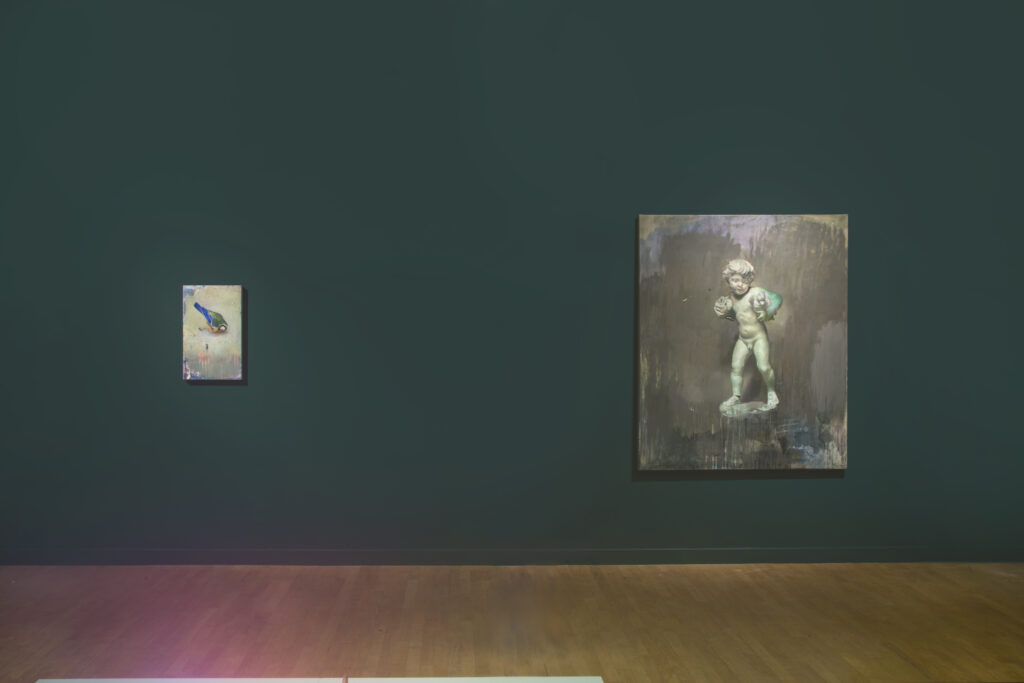
EX6, installation View, National Art Gallery of Bologna, Bologna, Italy
Cristiano Tassinari
Cristiano Aldini Tassinari
Cristiano Tassinari
Cristiano Tassinari
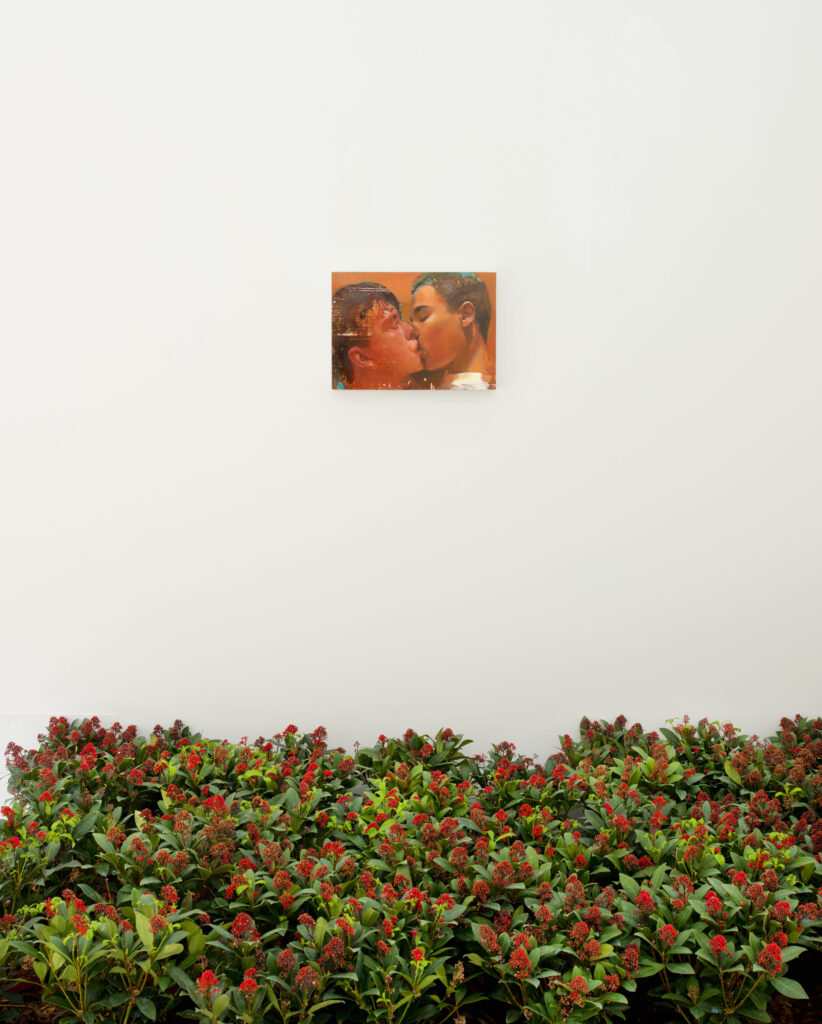
The kissers, 2022, 48 x 33,5 cm, oil on aluminum, Skimmia Japonica (Male), Gli Uomini delle Scintille, 2023, Installation View, Ncontemporary Gallery, Milan, Italy
Cristiano Tassinari
Cristiano Aldini Tassinari
Cristiano TassinariI
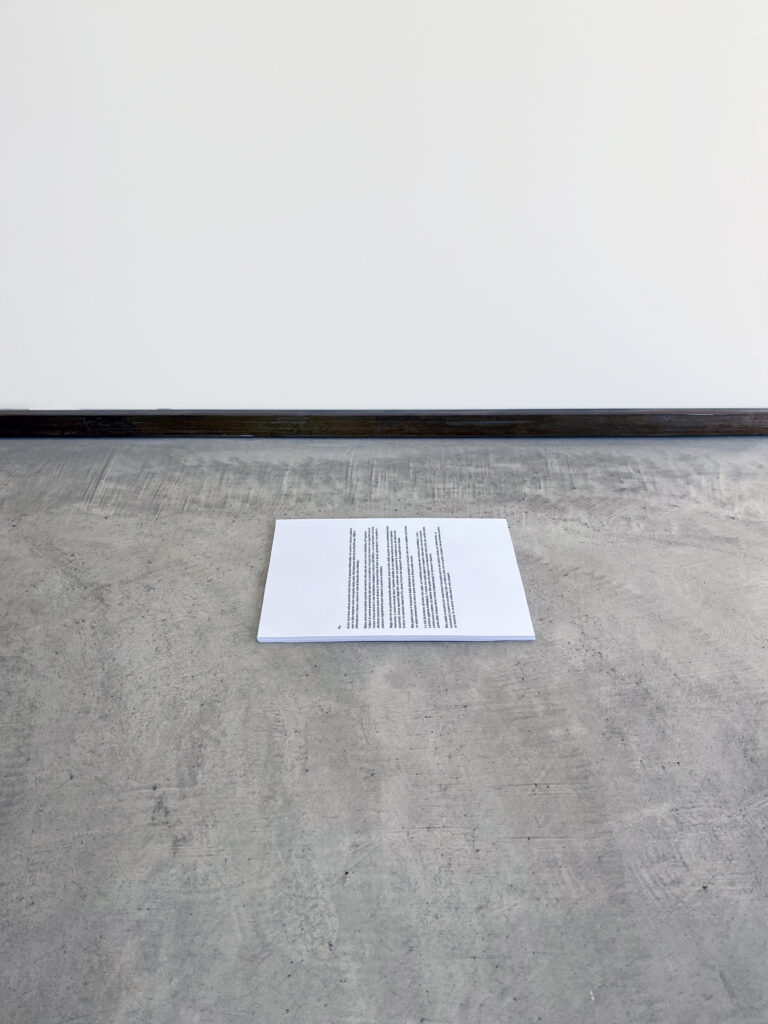
Text (Po), 2023, 30 x 40 cm, Gli Uomini delle Scintille, 2023, installation view, Ncontemporary Gallery, Milan, Italy
Cristiano Tassinari Aldini
l
l
l
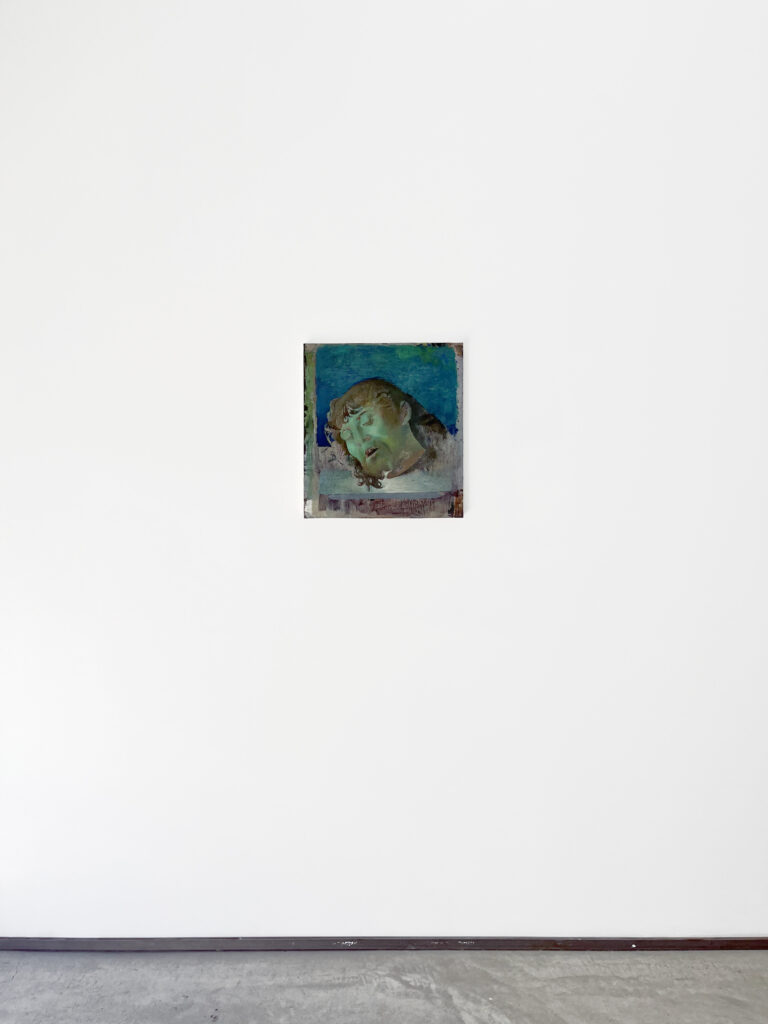
After Palmezzano, 2023, 51,5 x 56,5 cm, oil on aluminum, Gli Uomini delle Scintille, 2023, installation view, Ncontemporary Gallery, Milan, Italy
With the project, ‘Gli uomini delle scintille’ I retrace some moments of my relationship with my father, using an iconic apparatus of exclusively male subjects. My research has always had a strong autobiographical element. In the works on display, I explore the influence that the figure of my father had on me, painting a masculine universe marked by contrasting elements. In the works exhibited there is a deep affection for the father figure, combined with an intimate hostility to idealized images of virile and shiny masculinity. Two men kissing in a Berlin club, a naked child playing with – or perhaps killing – a goose, David and Goliath, the head of an ancient statue representing Joseph, the archetype of the father. All these figures not only turn the semantics of the father-son relationship on its head, but also create a new narrative around the representation of man. ’Gli uomini delle scintille’ is therefore an extended self-portrait, which is also meant to be a broader analysis of the traditional representation of masculinity.
I
Cristiano Tassinari
Cristiano Aldini Tassinari
I
Cristiano TassinariI
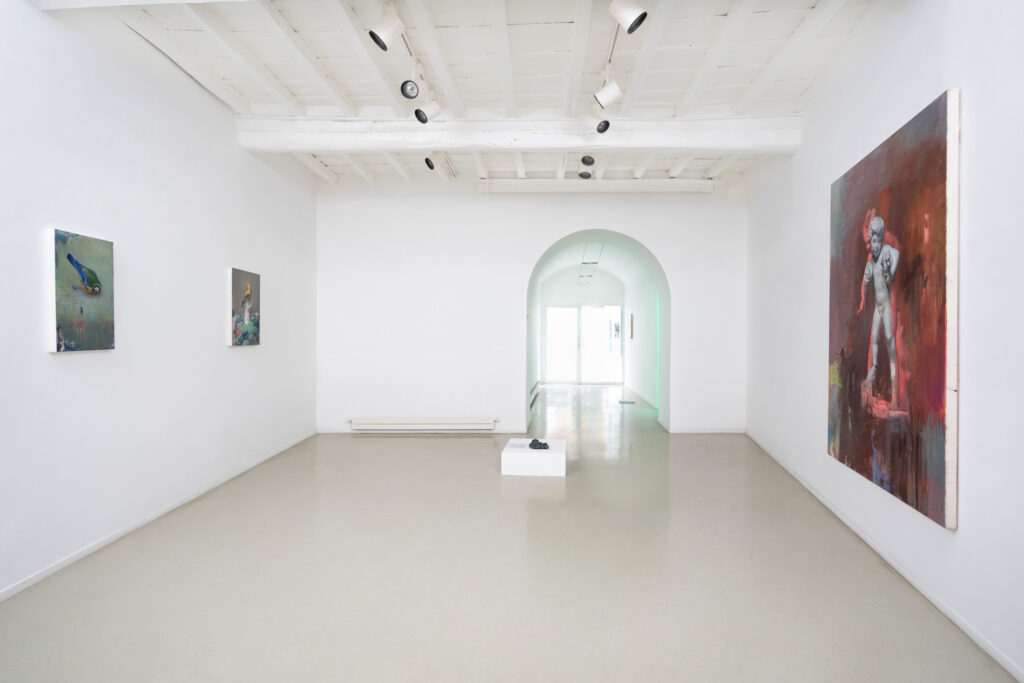
Cristiano Tassinari Aldini
C is for Cherry, 2022, installation view, Francesca Antonini Gallery, Rome, Italy, Ph. Daniele Molajoli
l
l
l
Cristiano Tassinari
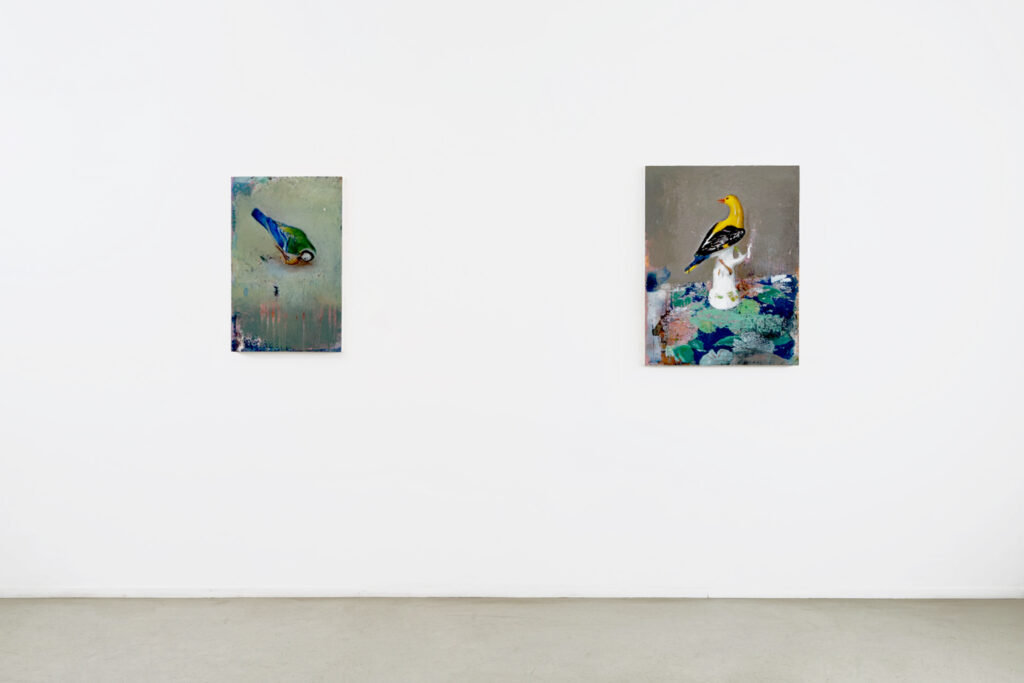
C is for Cherry, 2022, installation view, Francesca Antonini Gallery, Rome, Italy, Ph. Daniele Molajoli
l
l
l
Cristiano Tassinari
Cristiano Tassinari Aldini
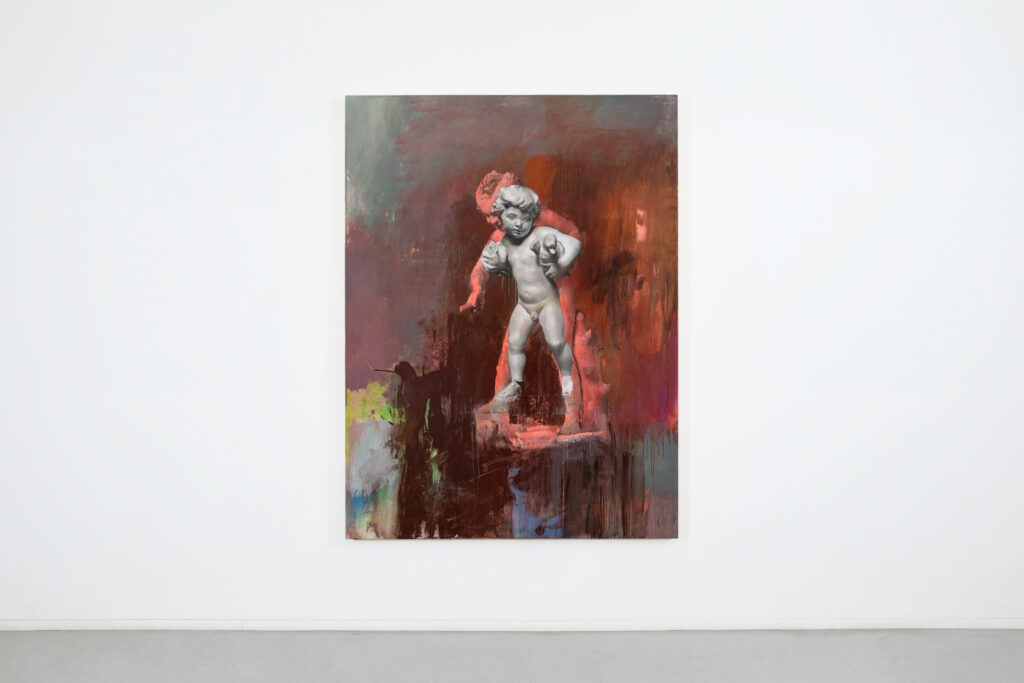
Putti, 2019-22, Oil on Canvas, 200 x 150 cm, C is for Cherry, 2022, installation view, Francesca Antonini Gallery, Rome, Italy, Ph. Daniele Molajoli
l
l
l
Cristiano Tassinari
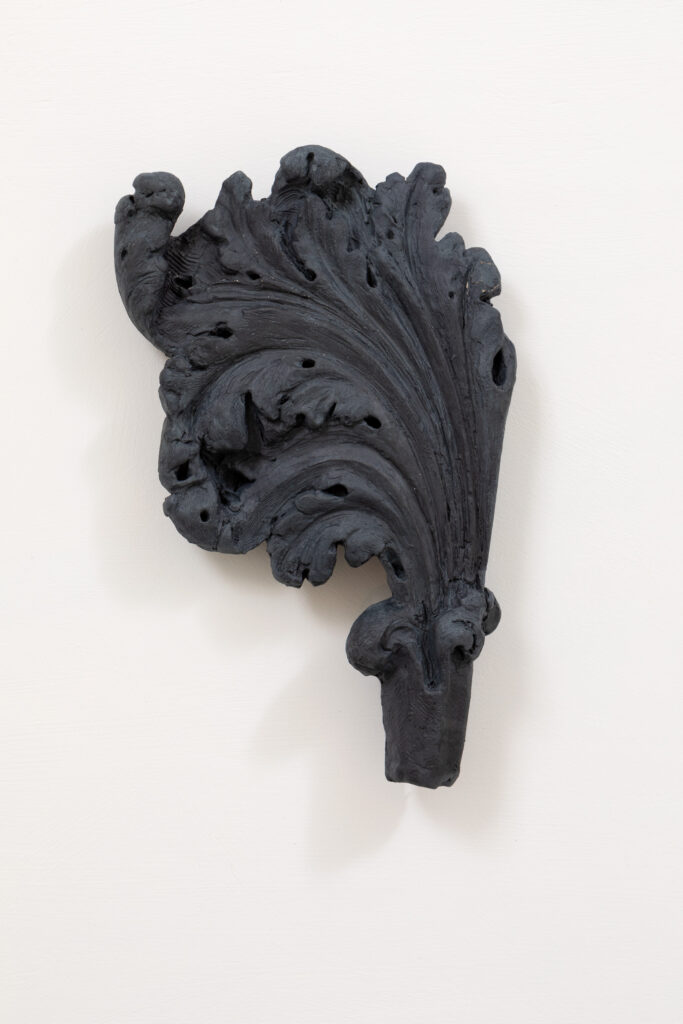
Forli-Paris, 2022, unfired clay, 33 x 20 x 4 cm, C is for Cherry, 2022, Francesca Antonini Gallery, Rome, Italy, Ph. Daniele Molajoli
With ‘C is for Cherry’ I explore the symbols and concepts embedded in my mother’s memories and imaginary through her collection of porcelain and postcards. Fascinated by her delicate gaze on the world at the expense of lived facts, I present a new body of work in the vivid intersection of history and affect, examining the discordance and opacity of feelings between mother and child.
Cristiano Tassinari
Cristiano Tassinari
Cristiano Tassinari
Cristiano Tassinari
Cristiano Tassinari
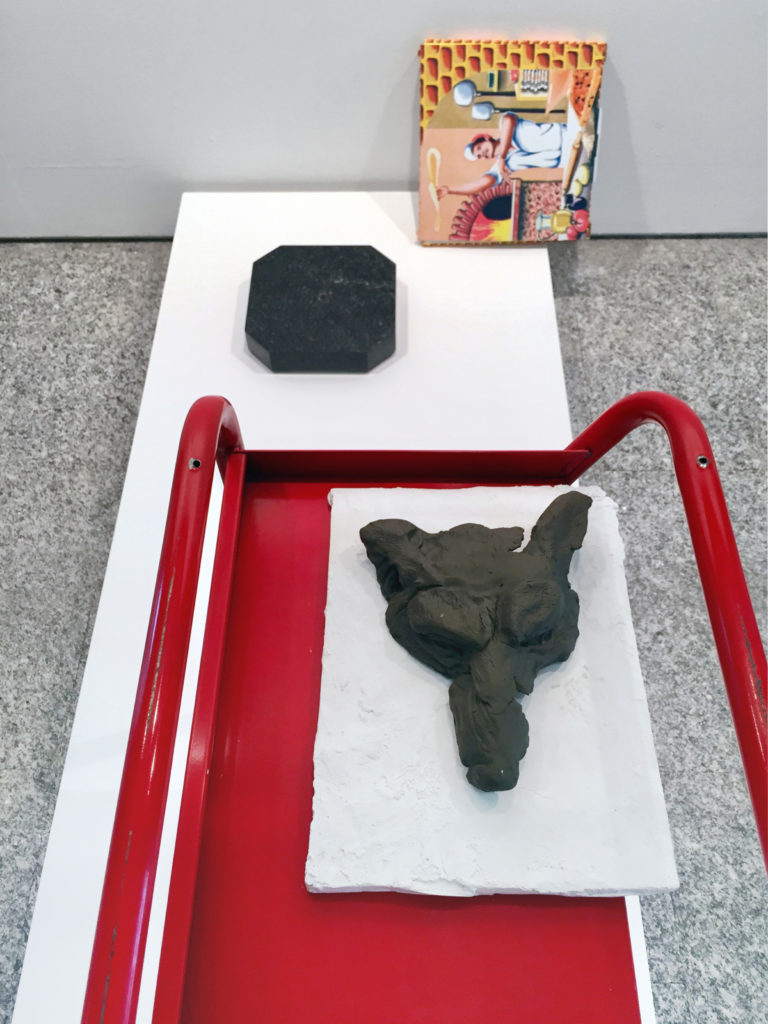
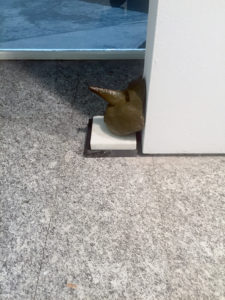
Masquerade, 2019, unfired clay, oil, marble, painted metal, found objects, variable dimensions, MAC Museum, Lissone, Italy
cristiano tassinari
l
Starting point of my project for the MAC Museum of Lissone, promoted by the cultural association ATRII, is an article appeared in Newsweek magazine.
The American magazine reports the phrase “white standard”, pronounced by a well-known political leader, in reference to the ethnicity of some Italians. I subsequently directed my project around the idea of stereotype, developing it with the intention to investigate and reinterpret some artifacts related to the Italian peninsula history.
I know that the use of raw earth, a material I have chosen, has very ancient origins. I have always been attracted by the radical poverty of its appearance. Linked to rural architecture, it was built with this method, which dates back to the origin of living, the most ancient part of my grandparents’ house. The use of unfired clay is not new to the art world, among the contemporary artists I would like to mention Urs Fischer, Daniel Dewar, Peter Fischli and David Weiss.
I allowed myself to be influenced both by the creative process and by the implications of the material. I have modelled three objects that touch on different eras and narratives, meaningful of the italian tradition and culture. The three sculpture-masks are a she-wolf’s head, the mythological figure of Medusa and the Carlo Collodi’s puppet.
The she-wolf linked to the Capitoline fable dating back to the 4th-3rd century BC it is a free reinterpretation of the female wolf linked to the Roman culture founding myth. The mask of Medusa instead is inspired by the Etruscan iconography very close to Asian art, with an open mouth and a tongue on display. The mask of Pinocchio is left to a state of draft playing with the misunderstanding of the materials.
The chosen set up is a search for the identities that make up the rich Italian society, in which capacity of the objects of condensing and conveying commonly shared meanings is questioned.
l
l
l
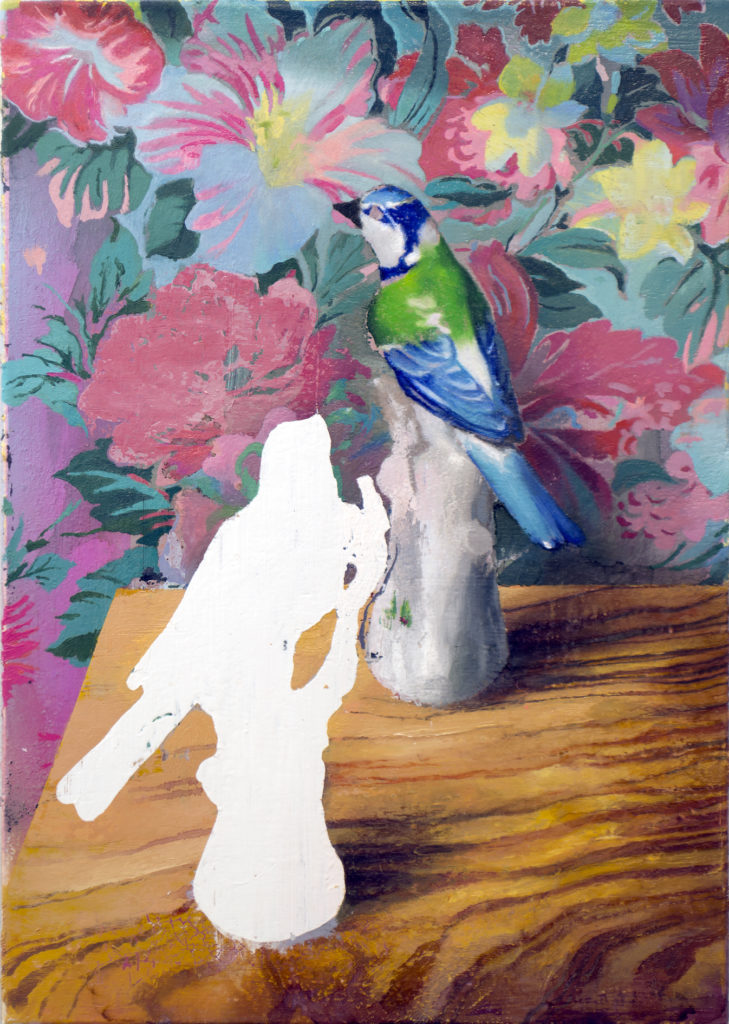
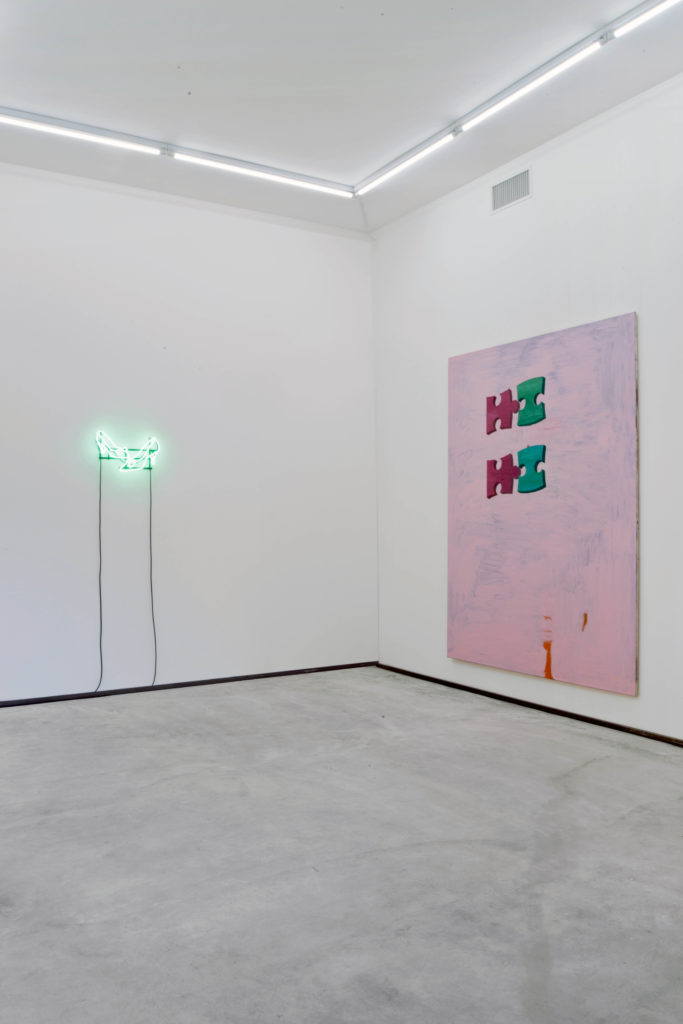
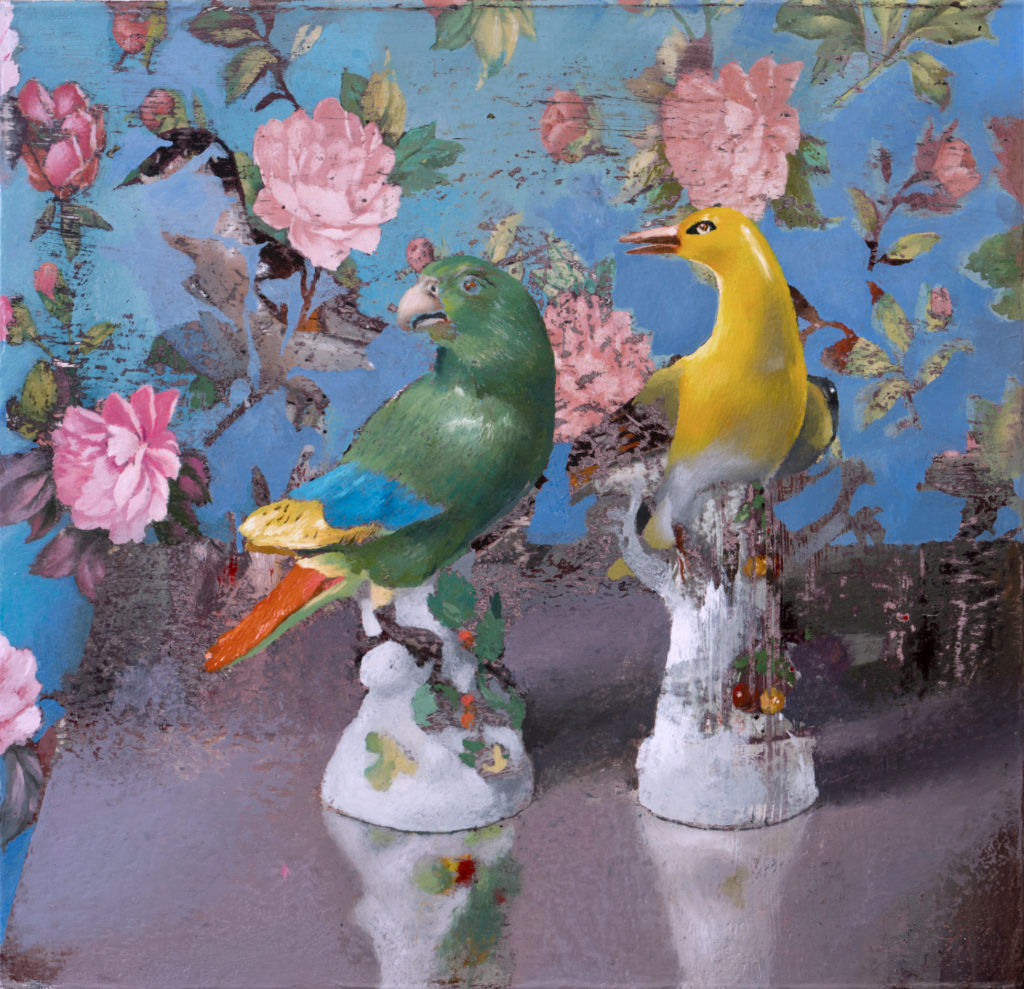
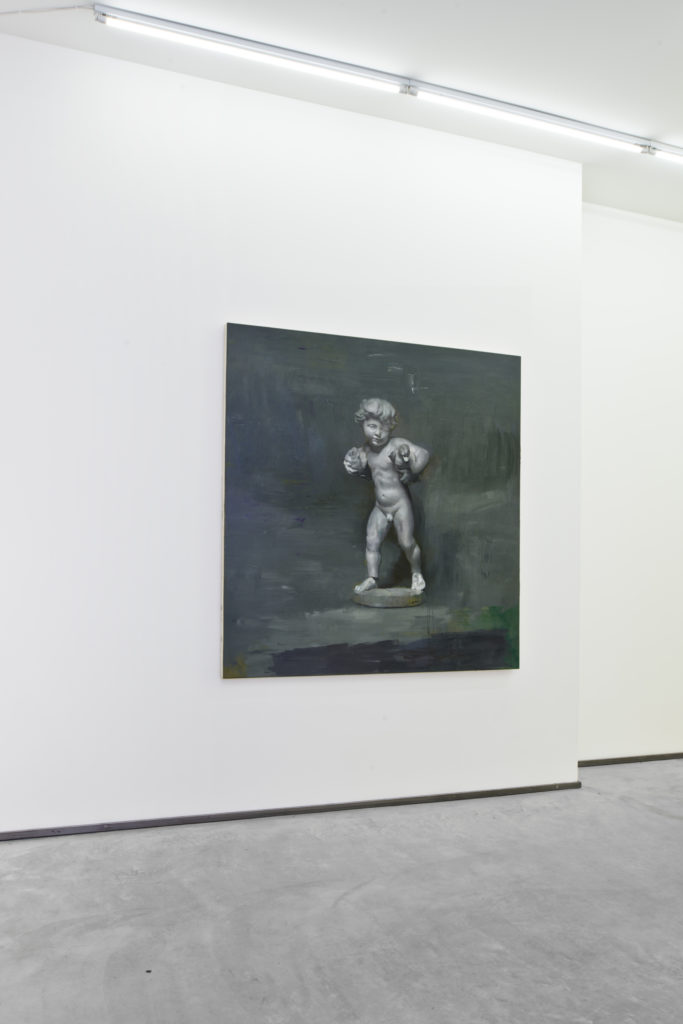
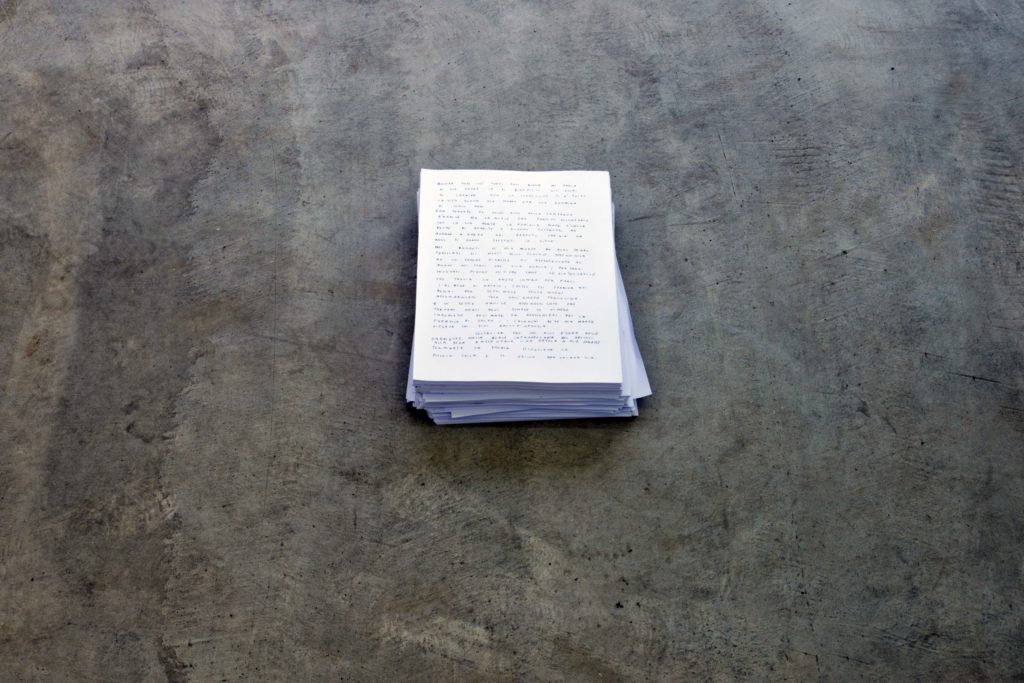
Mother’s Bliss, 2019, Ncontemporary Gallery, Milan, Italy
With the project Mother’s Bliss presented at the Ncontemporary gallery in Milan, I investigated my mother’s cultural imagery through her drawings and her memorabilia collection.I have always been fascinated from her look on the world and on things, this exhibition is a small portrait of her through her objects and drawings.
Part of the show is a letter, where I retraced through my mother’s stories that “mythical” time before her father’s suicide. Representations and symbols in her stories that are also genetic heritage of the generation born after the Second World Wa
The paintings are based on her collection of porcelain, postcards and paraphernalia and fuse the tradition of Flemish and Dutch old master painting with ideas and images drawn from her compilation.
The neon lights depicting a pair of shoes with ribbons and a native American head, are instead based on drawings made by my mother when she was a teenager; I tried to translate them as faithfully as possible without additions, working rather by subtraction. An exhibition Mother’s Bliss that really put me to the test, making me stronger and more aware of the stories that you can’t escape. The specific weight that an image or a sentence needs to reach the public depends on things that have happened and lived, not since yesterday but long ago.
Italianocristiano ta
l
l
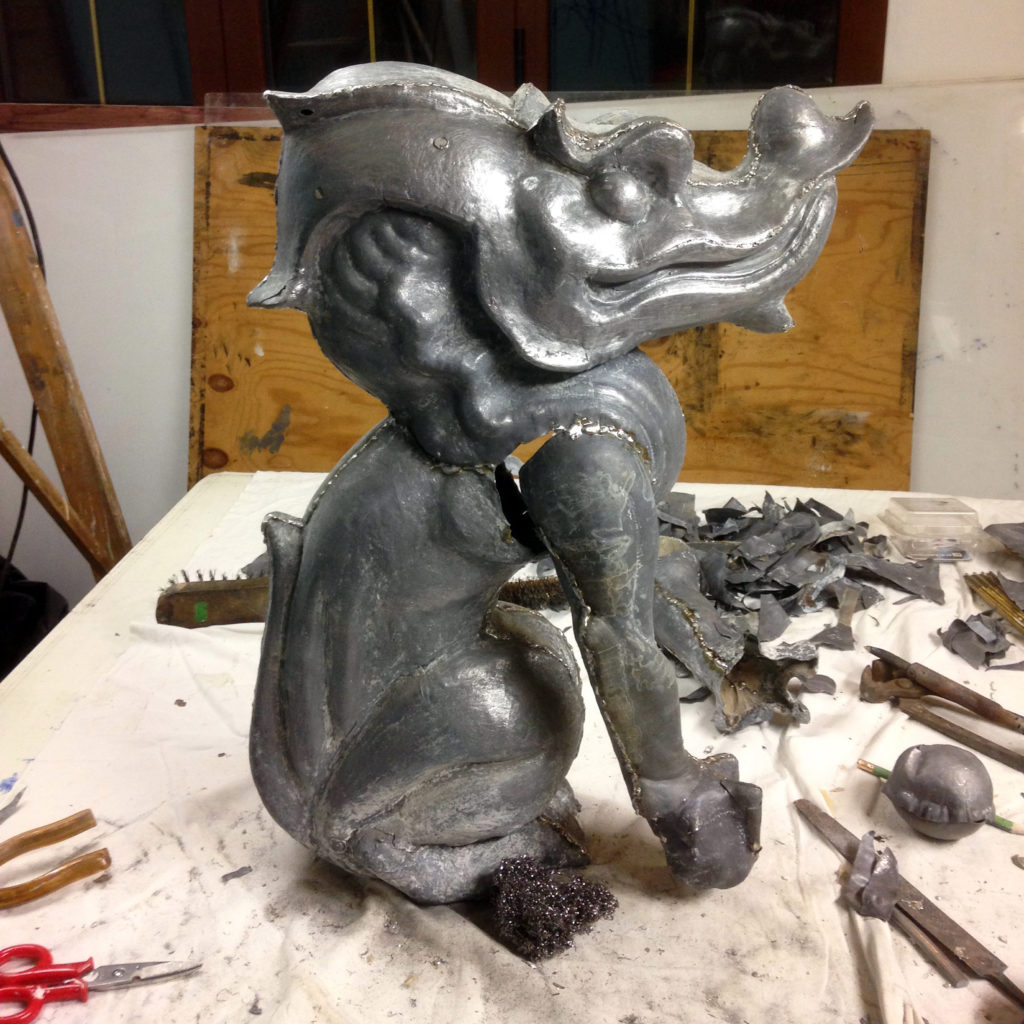
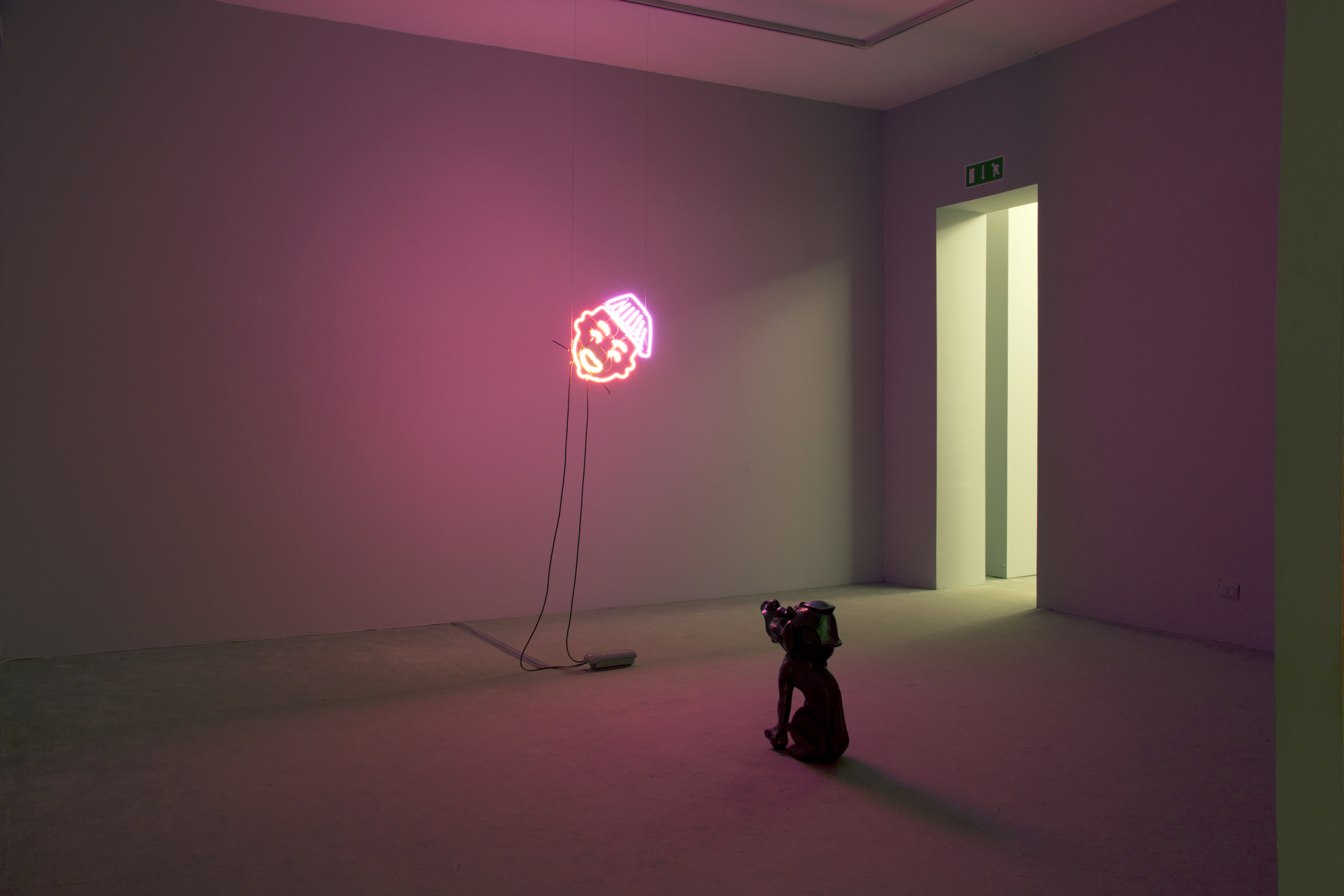
cristiano tassinari
cristiano tassinari
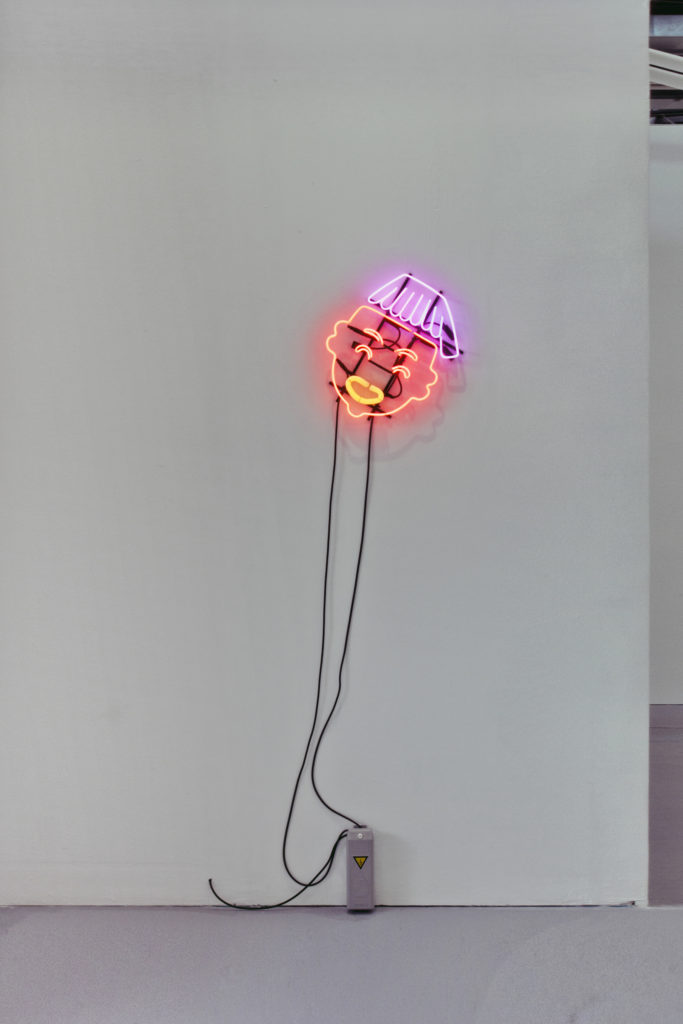
Africanella, 2016, neon light tube, power transformer, 50 x 45 x 9 cm / Auspicious beast, 2016, 60 x 40 x 30 cm embossed lead, epoxy resin, spray, MAR Museum, Ravenna, Italy
55m2 it’s our home! Testo curatoriale
55m2 it’s our home! Curatorial Statement
l
The neon work Africanella is based on an Italian company logo. The neon portrays in a caricatural and grotesque manner a dark-skinned African head with large lips and fez, the typical North Africa hat. I found it really significant that a company can use an image of this content today.
In this simple ready made, it seems to me that the whole history of my origin country, Italy, with its colonial past, to the sad recent history of the refugees seems to be condensed. A work that inevitably assumes neocolonial hues, which indirectly refers to the xenophobic and racist wave directed against Asian and African immigrants.
The title Africanella is borrowed from a 1935 fascist song for the war in Africa. Linked to male-dominated legacies, the ballad was born as a bit funny and promoted the union between Italians and Ethiopians. A popular sexist song, among other Faccetta Nera, Africanina or Pupetta Mora, linked to gender stereotypes and propaganda.
That past of violence and coercion is still among us, it is a past that contaminates the present and if not discussed, can cause damage to future generations. I believe that the accurate and analytical study of fascism is really important, with all its load of miseries and stereotypes to understand its mechanism and the language manipulation. A crazy ideology, but equally capable of penetrating the soul of people.
l
l
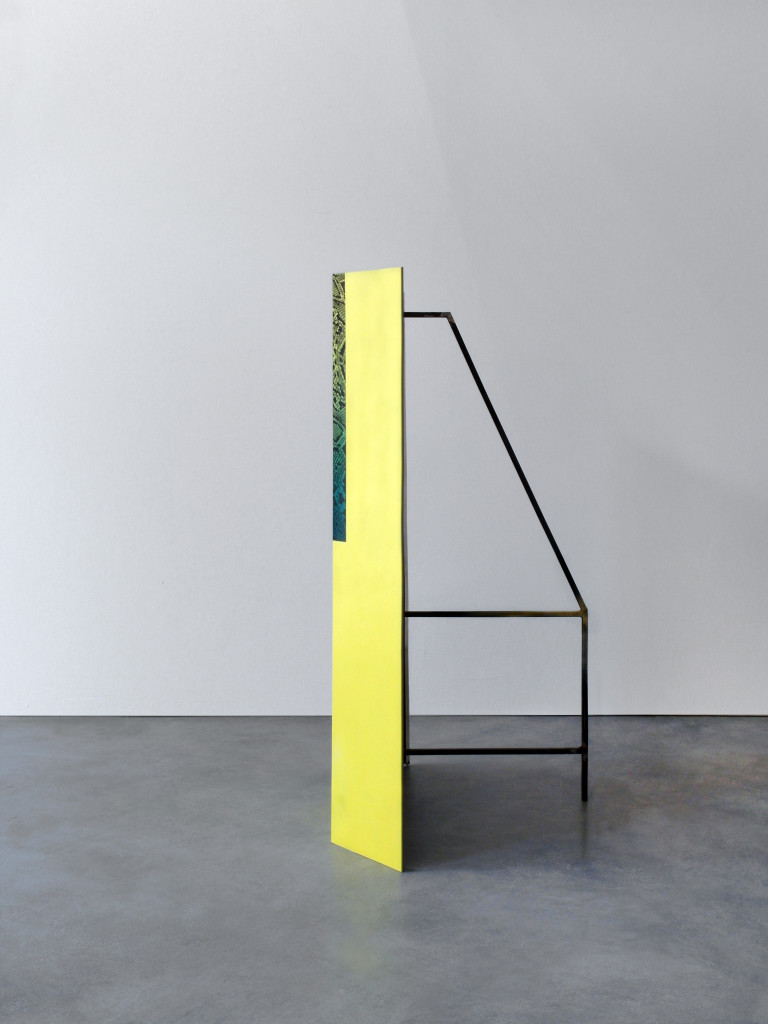
cristiano tassinari
Displayer, 2017, 100 x 64 x 70 cm, waterprint and spray on aluminum
More
The free-standing works that I call Displayers, function both as dividers and two-dimensional surfaces, a configuration that I have employed as part of my creation of hybrid sculpture to highlight the polysemy of displayers as boundaries and symbols of liminal areas.
The series includes a wide stylistic range of patterns, frames and templates; the way I bring together and present materials has been compared to physical manifestation of sentences, narratives, and languages. My sculptures and installations are assemblages of abstract elements, resembling details of urban or design objects, with more abstract and geometric configuration. I use a combination of found elements including ordinary furniture decorations, supermarket fragments, raw metal, and architectural sections.